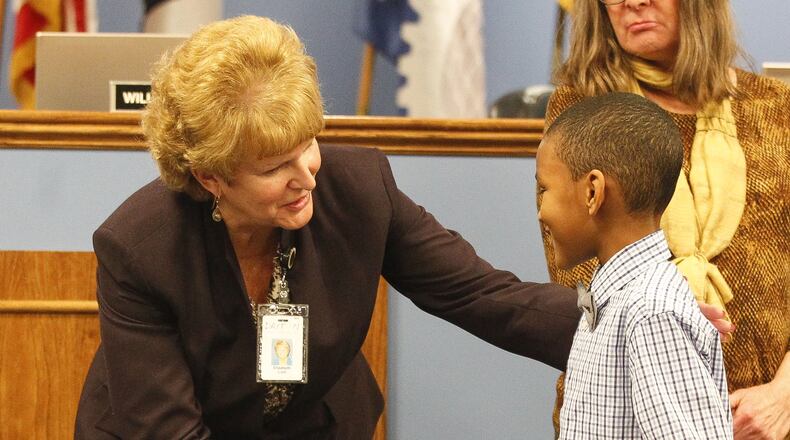“We work with the families via home visits, virtual visits, meeting in the parking lot, at the library, on the front porch … wherever we can,” said Sue Fralick, director of community behavioral health at Dayton Children’s Hospital. “We’re creative and flexible.”
Student mental and behavioral health has been a growing focus nationwide, as schools continue to recognize non-academic obstacles to school success, including child trauma in high-poverty areas.
The new Community Health Needs Assessment from Dayton Children’s showed 17% of Dayton children surveyed age 6-11 had been diagnosed with ADHD, 15% with anxiety problems and 11% with behavioral or conduct problems.
DPS Superintendent Elizabeth Lolli said in past years, the district had health providers from a wide variety of agencies coming into schools to serve students, but it wasn’t always well-organized, with communication a challenge. She said the student resiliency coordinators are a key to changing that.
As an example, Fralick said a teacher might ask the coordinator to observe a struggling student in class. The coordinator could then discuss their observations with the family and even accompany them on a doctor visit to help advocate for the best medication or treatment. The coordinator would then follow up with the teacher and principal on the steps being taken and any goals that counselors would encourage the student to work toward in the classroom.
“We’re trying to holistically be the middle of the hub and pull everybody together and look at all the things that could be happening for the child, including any circumstances in the home that may affect them,” Fralick said.
Lolli said the coordinators will start with a maximum caseload of 15 students so they can ensure quality. The coordinators' services come at no cost to families, and unlike some previous DPS efforts, there are no medical insurance hurdles for eligibility. Lolli said the money comes from the student wellness funding that Gov. Mike DeWine put in the state budget.
“The coordinators would be the connector for our parents, principals and teachers,” Lolli said. “They would set (goal) metrics based on the student’s needs, and they would manage that so we would not lose track of who was being served, what their goals were and what metrics were being met.”
Fralick said coordinators will use the Behavioral and Emotional Rating Scale as an assessment of the progress students are making. BERS-2 measures students' strengths and competencies.
Lolli said goals would include academic, behavioral and attendance components, with the hope that 65% of students being served would make progress.
Esther Haffey is one of DPS' new student resiliency coordinators, working with Fairview Elementary. She said the coordinators are building trust via outreach and by following through on what families need.
They may work with students who have ADHD or emotional disturbance, students going through stress and grief, or those affected by home issues such as addiction or lack of food. Those may manifest via students' academic problems, or social issues and disturbances in class.
“The beauty of the collaboration piece is that I’m pulling all the partners in and getting different perspectives,” Haffey said. “We’re all trying to focus on the same strengths and the same goals with the idea that that will create success for the student.”
Haffey and Fralick said regardless of the child’s situation, a pillar of the resiliency program is skill-building — finding and enhancing the student’s strengths. Fralick said they focus on the “Seven Cs” as building blocks of resilient students: competence, confidence, connection, character, coping, control, contribution.
“The idea is, What’s stopping the student from excelling in school?” Lolli said. “That’s our benchmark. Some obstacles are short term and some are long term. How can we as a school district enable that student to build those resiliency skills, so they can phase out of needing that constant support.”
About the Author

